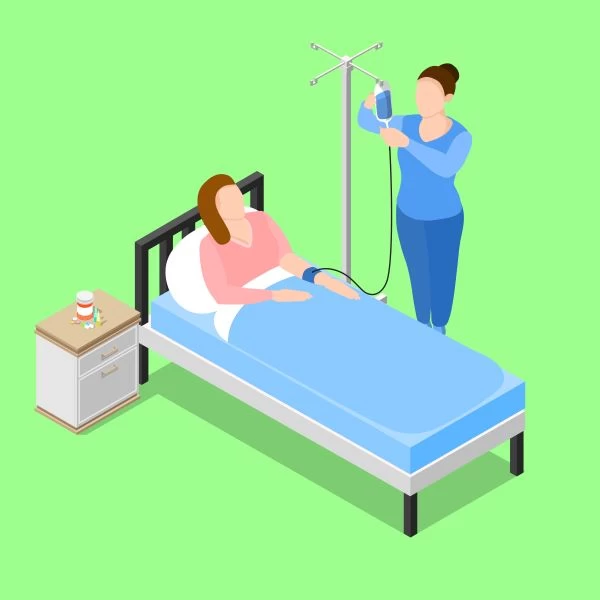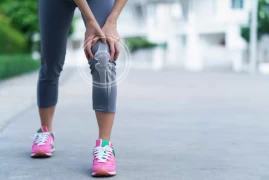
IV Applications in Physical Medicine
- IV Applications in Physical Medicine
- Glutathione
- Ozone
- Bicarbonate
- Vitamin C
- Safety and Side Effects of IV Therapies
- In Conclusion…
Physical medicine encompasses various treatment methods aimed at improving body functions, reducing pain, and enhancing patients' quality of life. In addition to traditional treatment methods, intravenous (IV) therapies have gained popularity in recent years. IV therapies provide faster and more effective results by delivering therapeutic substances directly into the bloodstream. In this article, we will examine IV treatments such as glutathione, ozone, bicarbonate, and vitamin C used in physical medicine in detail.
Glutathione
Definition and Function Glutathione is one of the body's most important antioxidants. The main components of glutathione are the amino acids glutamine, cysteine, and glycine. This tripeptide combats free radicals by reducing oxidative stress at the cellular level. Additionally, glutathione plays a critical role in detoxification processes and helps eliminate toxins from the body.
Use in Physical Medicine In physical medicine, glutathione is used for the following conditions:
- Chronic Fatigue Syndrome: Glutathione alleviates symptoms of chronic fatigue syndrome by increasing energy production and supporting cellular detoxification.
- Fibromyalgia: The anti-inflammatory effect of glutathione helps reduce pain and sensitivity in fibromyalgia patients.
- Neurological Disorders: Glutathione can slow the progression of neurological diseases by protecting nerve cells from oxidative damage.
- Detoxification: Glutathione accelerates the elimination of heavy metals and other toxic substances from the body.
Ozone
Definition and Function Ozone (O3) is a highly reactive oxygen molecule. Medical ozone has bactericidal, virucidal, and fungicidal properties. Additionally, it supports the immune system and increases cellular oxygenation levels.
Use in Physical Medicine Ozone therapy is used in physical medicine in the following ways:
- Chronic Infections: The antimicrobial effect of ozone is effective in treating chronic infections.
- Musculoskeletal Disorders: Ozone therapy alleviates muscle and joint pain by reducing inflammation and increasing tissue oxygenation.
- Wound Healing: Ozone accelerates the healing process by increasing oxygen levels in wound areas.
- Immune System Support: Ozone therapy enhances the immune system's function, strengthening the body's resistance to diseases.

Bicarbonate
Definition and Function Sodium bicarbonate regulates the acid-base balance in the body, preventing metabolic acidosis. By neutralizing body pH, it optimizes cellular functions and supports overall health.
Use in Physical Medicine Bicarbonate IV therapy is used for the treatment of the following conditions:
- Chronic Fatigue: Bicarbonate alleviates muscle fatigue and increases energy levels by reducing lactic acid buildup in the body.
- Fibromyalgia: Bicarbonate helps alleviate fibromyalgia symptoms by reducing muscle pain and inflammation.
- Exercise Performance: Bicarbonate improves performance and prevents muscle cramps by neutralizing acidosis that occurs during exercise.
- Detoxification: Bicarbonate supports the body's detoxification processes and helps eliminate toxins.
Vitamin C
Definition and Function Vitamin C is a powerful water-soluble antioxidant. It supports the function of the immune system, plays an important role in collagen synthesis, and prevents cellular damage.
Use in Physical Medicine Vitamin C IV therapy is used for the following conditions in physical medicine:
- Musculoskeletal Disorders: Vitamin C alleviates muscle and joint pain by reducing inflammation and supporting the immune system.
- Chronic Fatigue: Vitamin C alleviates symptoms of chronic fatigue by increasing energy production and reducing oxidative stress.
- Wound Healing: Vitamin C accelerates wound healing by increasing collagen synthesis.
- Immune System Support: Vitamin C strengthens the immune system by increasing the body's resistance to infections.
Safety and Side Effects of IV Therapies
When administered correctly, IV therapies are generally safe. However, like any medical intervention, IV therapies have some potential side effects and risks. These side effects include infection, inflammation of the vein, allergic reactions, and electrolyte imbalances. Therefore, it is important for IV therapies to be administered by licensed and experienced healthcare professionals. Patients should provide their doctors with complete information about their health status before treatment and report any side effects or discomfort during the treatment process immediately.
In Conclusion…
IV therapy applications in physical medicine are effective methods for accelerating patients' recovery and improving their quality of life. The use of components such as glutathione, ozone, bicarbonate, and vitamin C offers significant advantages in the treatment of various musculoskeletal disorders and chronic conditions. These treatment methods help patients recover faster and more effectively by reducing inflammation, supporting detoxification, and increasing overall energy levels. For IV therapies to be applied safely and effectively, they must be managed by experienced healthcare professionals and patients must be carefully monitored during the treatment process.

Spc. Dr. Elif Berber, MD
Specialist in Physical Medicine and Rehabilitation





